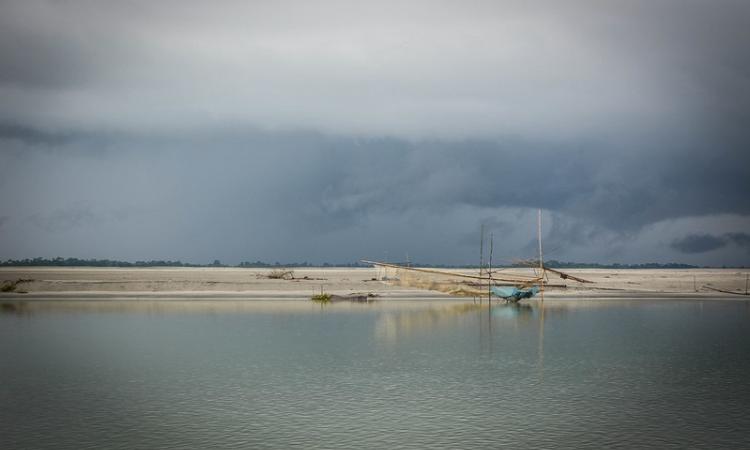
Floods are often perceived as a destructive force in Assam and other parts of India. However, this is not so among the Mishing communities that live near the river banks or on chapories (sand bars) on the Majuli Island in Assam, North East India informs this paper titled 'The wait for the flood is also the wait for fish!: Water commons among the Mishing on Majuli Island (Assam), India' published in the Millenium Journal of Humanities and Social Sciences.
The Mishing form the single largest community on the island, constituting about 42 percent of the total population and they are commonly referred to as the river people as they historically settled near rivers. Agriculture, fishing and cattle rearing are the backbone of the Mishing economy.
Their proximity to the river and their continual exposure to floods every year shapes the everyday lives of the Mishing communities and their sociocultural and economic practices are deeply intertwined with the annual flooding cycle. Floods not only create common water sources, but also ensure food and livelihoods for the Mishing as floods bring along with them heavy loads of fish and the newly created water sources teem with a variety of fish.
Studies on Majuli have paid little attention to the water commons and the fishing culture associated with it among the Mishing. This paper sheds light on these community practices of the Mishing tribes.
Majuli, a haven for fish
Majuli, in the middle of the Brahmaputra, is a rich fishing ground and has a large number of inland water bodies that include over hundred and fifty registered and unregistered beels as well as ponds, streams, swamps and channels. It is a rich source of fish and has become a good fishing ground for commercial fishing.
Most of the private or government owned fishery resources are not accessible for public. Sections along the fringes of Majuli have been leased out by the state to private individuals for a fixed amount of money. Community fishing is disallowed in these private fishing grounds.
It is a common sight to see a boundary of nets strung on bamboo frames creating enclosures marking private fishing grounds that serve as a habitat for fish during the dry winter.
Floods receive a warm welcome
However, there are also other kinds of fishery resources which come with the floods. After the monsoon, the low-lying areas on the island get filled with water and become temporary water bodies for few months. These temporary water bodies include small streams, swamps, tulubs or ponds and other shallow water bodies. These serve as common fishing grounds for the Mishing tribes. During the floods, tulubs get filled with different varieties of fish and other aquatic animals.
The arrival of monsoon marks the beginning of flooding and fishing season on the island and begins sometime in the month of June and ends in October. The coming of floods after a long spell of dry winter months is welcomed by the communities as - with the floods come the fish. During the dry months, no fishing is possible as the river dries up and the fisherfolk are forced to take up other odd jobs to support their family.
During the floods, the whole village is submerged and low-lying areas around the village become temporary water bodies that teem with different varieties of fish and other aquatic resources. These temporary water bodies are treated as water commons by the villagers and women fish in small groups using handmade bamboo baskets, children fish with fishing hooks and nets, and men fish using fishing nets in these temperory water sources.
Community fishing is a time for forming alliances, fun, merry making and celebrating. Fishing among women and children is often a fun activity, and an opportunity to socialise. When the water levels rise, schools close down for many days giving the children the time to fish and play in small streams and other water sources. The flood season is also a source of excitement for children because of the fish curries their mothers prepare for the family. For women, the arrival of flood means getting a short break from the various agricultural and daily activities and more opportunity to socialise.
Floods, a boon for the Mishing
Developmental discourses often perceive floods as a destructive force requiring large-scale infrastructural protection such as building embankments and dams. However, the Mishing consider floods to be a part of their everyday life.
The paper ends by arguing for the need to conduct further research on understanding the complex interaction between the river and the various communities inhabiting the edges of Majuli Island, along the river that would help in devising more inclusive policies since millions of farmers and fishers in Assam rely on the Brahmaputra.
The full paper can be accessed here
/articles/floods-boon-bane